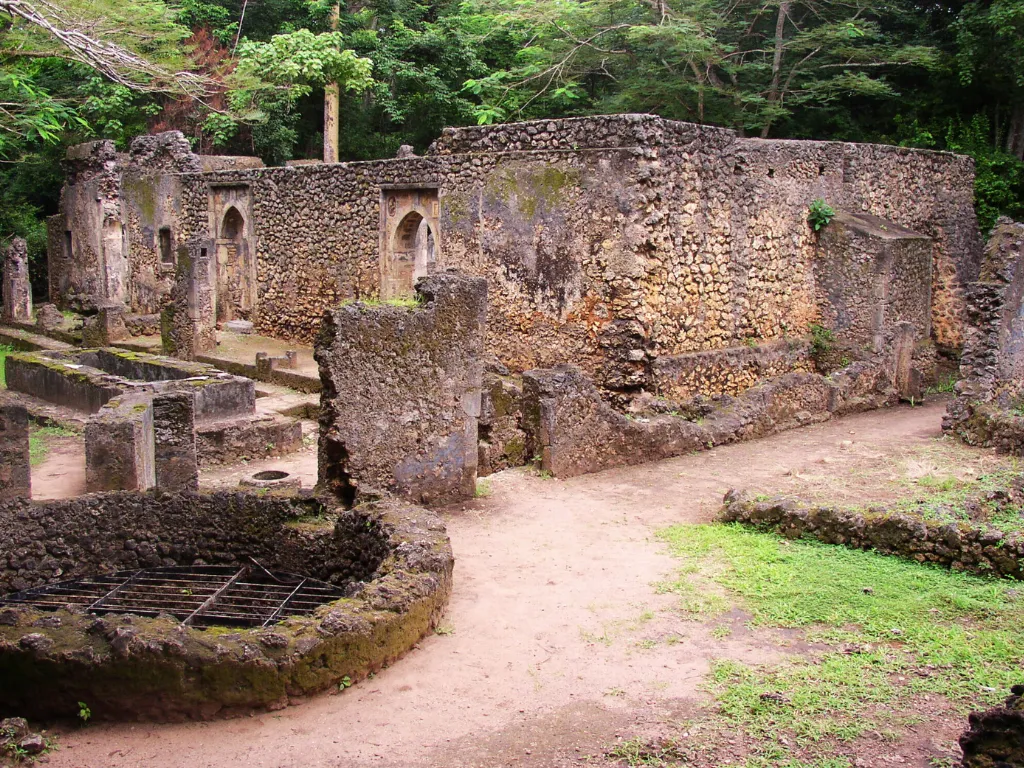

Why Visit? Beneath the shady canopy of an ancient forest, the Gedi Ruins whisper tales of a once-thriving Swahili town that flourished between the twelfth and seventeenth centuries. Mysteriously abandoned, these coral-stone structures—mosques, palatial houses, and grand walls—now lie in silent splendor, inviting travelers to ponder the fortunes and tragedies of ages past.
Coral-stone edifices reflect Gede’s Swahili-Islamic heritage, with remnants of elaborate pillars and courtyards.
Towering trees envelop the ruins, offering a habitat for monkeys, rare birds, and the intangible aura of sacred groves.
Excavations under James Kirkman and others unearthed pottery shards, beads, and glassware from distant lands, attesting to Gede’s once-prominent trade links.
The centuries-long enigma of Gede’s sudden desertion fuels both scholarly debate and visitor intrigue.
First arising in the 12th century, Gedi was extensively rebuilt during the 15th and 16th centuries, likely spurred by migrations from Kilwa and other coastal polities. At its zenith in the 15th century, Gede grew wealthy, its people raising grand mosques and stately dwellings amidst 45 acres of primeval forest.
Yet in the early 17th century, misfortune befell the city. The destructive Wazimba raid (1589), the removal of Malindi’s Sheikh to Mombasa (1593), the diminishing water table, and the encroachment of the Galla nomads from Somalia all conspired to leave Gede forsaken. Gazetted in 1927 as a Historical Monument and further protected in subsequent decades, Gede stands as the first intensively studied archaeological site along the Kenyan coast.
Visiting Hours: 8:30 AM – 5:30 PM daily, inclusive of public holidays.
Tickets & Admission: Obtain vouchers via eCitizen. No coin of the realm tendered on-site.
Guided Tours: Local guides well-versed in Swahili lore stand ready to elucidate Gede’s storied past.
Location & Access: A short trip from Malindi by road, easily reached by personal vehicle or hired transport.
Heritage Lectures & Talks: Periodic gatherings where archaeologists and historians share insights into the Swahili civilization.
Community Ceremonies: Even now, local communities hold rituals in the forest, honoring ancestral spirits and preserving intangible cultural traditions.
Interpretive Centre: Displays featuring historical maps, photographs, and curated archaeological finds.
Gift Stalls: Offering modest keepsakes and reading materials on coastal history.
Refreshments Nearby: Small cafés in the vicinity provide local fare and beverages.
Early Exploration: Morning hours afford cooler temperatures for meandering among moss-clad walls.
Forest Wildlife: Keep a discerning eye for monkeys, birds, and other woodland creatures.
Respect Sacred Spaces: The forest holds spiritual significance for surrounding communities—adherence to posted guidelines is kindly requested.
Step amidst Gede’s winding paths and collapsed walls, dear voyager, and immerse thyself in the echoes of a once-glorious Swahili outpost. Here, time doth stand still, waiting for those who seek to unravel its hidden chapters.
The National Museums of Kenya (NMK), established under the Museums and Heritage Act (2006), is a multi-disciplinary institution dedicated to collecting, preserving, researching, and presenting Kenya’s cultural and natural heritage.
Sign up to our newsletter